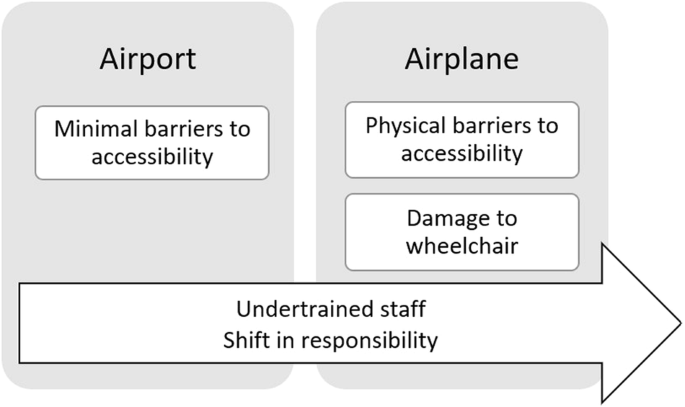Study design
Qualitative exploratory study.
Objectives
To understand the lived experiences of individuals with spinal cord injuries or disorders (SCI/D) who use wheelchairs during air travel in the United States (US), with a focus on the challenges and barriers to accessing this form of transportation.
Setting
Wheelchair users with SCI/D living in the community in the US.
Methods
Semi-structured interviews were used to collect data from six wheelchair users with SCI/D. Data were analyzed using a six-step thematic analysis.
Results
Experiences of wheelchair users during air travel clustered into three themes; experiences interacting with the airport, experiences interacting with the airplane, and experiences across all stages of air travel. Barriers to airport accessibility were minimal. Physical barriers to airplane accessibility and damage to wheelchairs occurred when interacting with the airplane and airline staff. Undertrained staff and a shift in responsibility to the passenger with a disability impacted all stages of the experience.
Conclusion
Wheelchair users with SCI/D encounter challenges that can result in unsafe and inaccessible air travel within the US. Adverse consequences of air travel often impact the individual’s independence and quality of life during and after the flight. Participants provided recommendations to improve the air travel experience for wheelchair users, including the ability to remain in one’s wheelchair while onboard the airplane.










